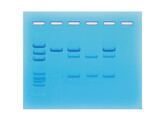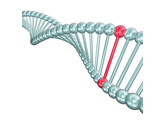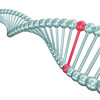Cancer Gene Detection
Immortality through uncontrolled cell division is a characteristic of cancer cells. The p53 gene is a tumor suppressor gene which prevents this. Mutations in this gene are present in more than 50% of cancers. Testing people for mutations in their p53 gene can indicate an increased risk in developing cancer. These tests raise intriguing ethical questions for both the individual tested and the family of an individual who chooses to be tested. In this experiment, students determine a pedigree for a family suspected to be carriers of mutations in their p53 genes. A DNA test indicates their likelihood of developing cancer.
• Discover the molecular biology behind familial cancers
• Explore how oncologists use pedigrees and molecular diagnostics
• Construct a family’s pedigree for Li-Fraumeni syndrome
• Perform agarose gel electrophoresis to separate different sized DNA molecules
• Load, run, analyze, and size control samples and a patient’s blood, tumor, and tissue samples to identify mutations in their p53 gene
Immortality through uncontrolled cell division is a characteristic of cancer cells. The p53 gene is a tumor suppressor gene which prevents this. Mutations in this gene are present in more than 50% of cancers. Testing people for mutations in their p53 gene can indicate an increased risk in developing cancer. These tests raise intriguing ethical questions for both the individual tested and the family of an individual who chooses to be tested. In this experiment, students determine a pedigree for a family suspected to be carriers of mutations in their p53 genes. A DNA test indicates their likelihood of developing cancer.
• Discover the molecular biology behind familial cancers
• Explore how oncologists use pedigrees and molecular diagnostics
• Construct a family’s pedigree for Li-Fraumeni syndrome
• Perform agarose gel electrophoresis to separate different sized DNA molecules
• Load, run, analyze, and size control samples and a patient’s blood, tumor, and tissue samples to identify mutations in their p53 gene
Properties
- F778115
- 115




